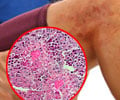Highlights
- Low birth weight was thought to be a major risk factor for childhood asthma in blacks.
- A recent study finds that there is another trigger which might increase the risk of asthma in black children.
- Persistent residential segregation exposed to air pollution and older buildings which harbor mold spores and fecal matter from rodent and insect might be the actual reason.
Janet M. Currie, who is the Henry Putnam Professor of Economics and Public Affairs, explains that the racial disparity in asthma rates is so strong that some researchers have even concluded that "being black" is a risk factor for asthma.
Low Birth Weight Predisposes Risk of Childhood Asthma
Low birth weight may predispose children to asthma, but by itself it doesn’t cause the disease. A physical trigger is required. Thus it appears that something about the neighborhoods where the low-birth-weight children live, regardless of their race, is causing them to develop asthma.
"This distinction is important," Currie said, "because unlike race, it is possible to change neighborhoods, either by finding and remediating the hazards that are causing higher asthma prevalence or by helping vulnerable children to move."
To conduct their study, Currie and Alexander combined two sets of data records of all children born to mothers who lived in New Jersey from 2006 to 2010, and records of all New Jersey hospital emergency room visits from 2006 to 2012. The records help in determining whether or how many times each low-birth-weight child was treated in an emergency room for asthma during the study period.
Currie and Alexander’s study suggests that the characteristics of highly segregated neighborhoods may be a major factor behind such persistent racial health disparities.
Locality Susceptible To High Air Pollution and Asthma
But when Currie and her co-author, Princeton Ph.D. Diane Alexander of the Federal Reserve Bank of Chicago, compared low-birth-weight children of all races and ethnicities who lived in "black" ZIP codes in New Jersey -- in which half or more of the residents are African American -- the racial disparity in the association between low birth weight and asthma disappeared completely.
In other words, all low-birth-weight children in these ZIP codes, whatever their race, had the same elevated risk of asthma, compared to children born at a normal weight.
The researchers found that New Jersey neighborhoods with a majority of black residents are on average twice as close as other neighborhoods to major industrial sources of air pollution. They are more likely to be near busy highways that produce high concentrations of harmful particulate matter.
Currie and Alexander’s study couldn’t say definitively what exactly about the link between the Zip codes and the risk of the disease. But indoor and outdoor pollution might be the triggering factor for asthma in low birth weight children.
Reference
- Janet M. Currie et al., Study links unhealthy segregated neighborhoods to childhood asthma, NBER (2017).
Source-Medindia














